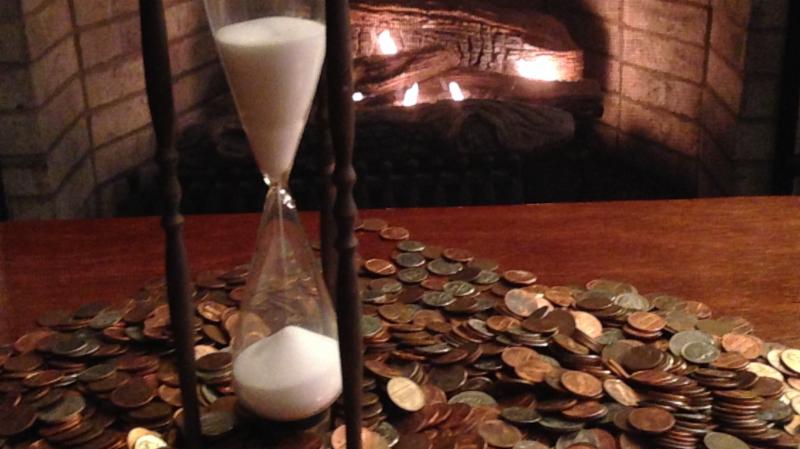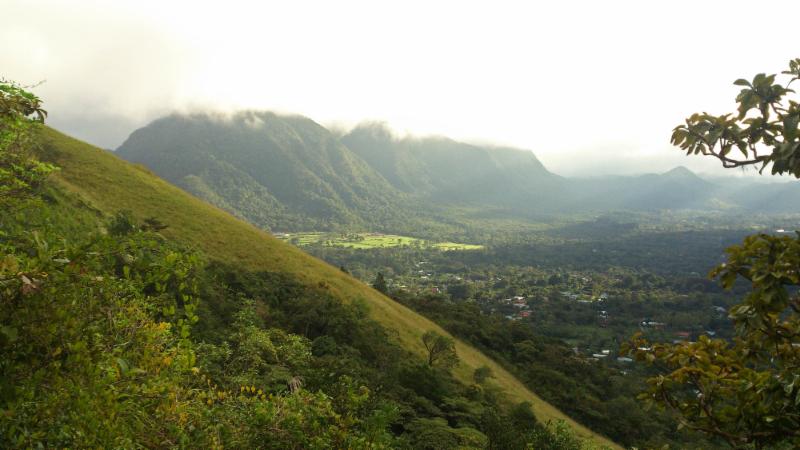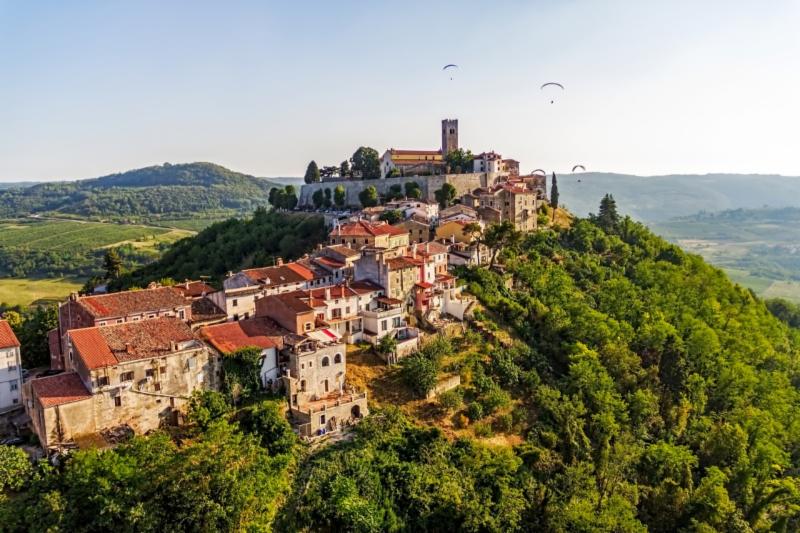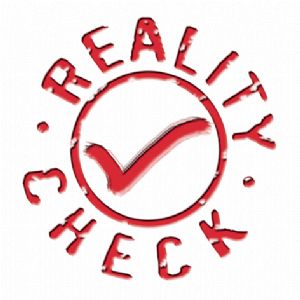CONNECT WITH KFS


Jeff Karp


Jeff Kendall


|
|
|
|
Welcome to the 3rd Quarter-2018 edition of The Karp Quarterly. Our newsletter celebrates the joy and experiences in life. We share updates on our families, happenings and news from the quarter, recipes and travel tips.
This is your newsletter! Please let us know
if you have a recipe to share, travel to a fun
place (send a picture) or even have a gardening/home repair tip. Most importantly, feel free to share a great story that we can share with others.
Email Us Your Story Here
|
On September 20, 1973, music lost one of its favorite sons, Jim Croce. His folksy style
 and iconic lyrics told stories of love, life and relationships. One of my favorites,
Time in A Bottle, talked about how precious time is.
My message for this quarter's newsletter is this...if time is a depleting natural resource for each of us, do we put as much value on the quality of our time spent as we should?
Case in point...I was in my Wednesday morning cycle strength class. We were all able to measure RPM's, calories and watts on our cycles. Some individuals then added additional tracking on their fitbits, and of course, everyone was tracking minutes until the class was over. That was when it hit me, people are spending so much time (and energy) tracking and measuring everything. I asked myself if they were enjoying the exercise experience or were they too busy in the measuring process?
As a society, I believe that we have gotten over-scheduled and over-tracked to the point that even our stress relief activities need to be monitored. Does that mean that measuring the outcome may be diminishing the pure enjoyment of the activity?
One line in that Croce song says, "There never seems to be enough time to do the things you want to do, once you find them."
Assuming an average life span of 85 years, each quarter of our lives is about 8000 days (birth thru college, college to mid-life, mid-life to retirement and retirement to death). How much time are we allowing for non-measured activities? Does anyone still watch a sunset, take a walk (without counting steps), spend family/friends time without technology?
We, at Karp Financial Strategies, work every day to protect and grow your wealth so that you will be able to live the life you choose. While money is an important asset and you work hard for it, I ask this, are you working equally hard to maximize your other resource, time? Are you investing and spending it wisely?
Remember...
Put a smile on someone's face each and every day, and you will be rich beyond your wildest dreams.
Warmest Regards,
Jeffrey R. Karp
|
|
On the Homefront
The Karps
The summer got off to a nice start with a family trip to Ocean Isle Beach. Maryann and Jeff were accompanied by their daughter, Erin, her fiancée, Rich, and their grandson, Sam.
Their summer in Mooresville has been spent on Lake Norman, on the tennis courts and relaxing on the front porch.
Jeff continues to be a part of one of the Mooresville Rotary clubs helping to support needed projects in the town. In addition, he has been asked to serve on the newly established Comprehensive Land Use Plan Steering Committee for Mooresville. That group is charged with the mission to create a vision for Mooresville that welcomes growth and plans for roads, housing and quality of life. This should be fun!
As for continuing education, it has been one for receiving and giving. Jeff attended the Transamerica Coaching Forum in Boston back in April. He has attended this conference for several years now because of the new ideas on how to help plan for a better lifestyle in retirement. Last, but not by any means least, Maryann has been tutoring 1st - 3rd graders as part of the Y Readers summer program. Being a part of this program is a reminder of the gift that reading is.
The Kendalls
The second quarter started as the first ended, with soccer and baseball for all the boys. Peyton finished up his second full season of competitive soccer, while Braden and Tristan finished up their recreational soccer season along with their travel baseball teams. It made for a busy spring on the weekends, but also enjoyable. In May, Braden and Peyton went on the annual 5th grade field trip to Wilmington, with Jeff as one of the chaperones. This was a two-day trip highlighted by a trip to the aquarium and to Carolina Beach State Park. Tristan will get his turn next year. Finally, once school and sports were over, the big vacation occurred in June...Disney World; a week at the happiest place on Earth. Of course, the boys are ready to go back.
Pertaining to finances and continuing education, other than a few conference calls and group meetings with portfolio managers, this quarter was relatively quiet for Jeff.
Events and meetings, and even the conference calls, help Jeff to continually educate himself and stay abreast of the latest financial news that could impact you.
|
Basque Bites: Scallops in a Shell
|
Cook Time: 1 minute
Serves 6
Ingredients
- 2 C - kosher salt

- 3 green onions, minced
- 1 - 2-inch piece fresh ginger, peeled and minced
- 1/4 C - sherry vinegar
- 2 t - light soy sauce
- 1/2 t - toasted sesame oil
- 1/4 t - red pepper flakes
- 1/2 t - sugar
- 12 scallop shells (ask your fishmonger)
- 12 medium scallops, small outer muscle removed
- 24 very thin (1-inch square) slices jamón ibérico fat or Italian or Spanish lardo
- 1/2 bunch cilantro, coarsely chopped
Directions
- Preheat the broiler or oven to 500°F.
- In a bowl, combine the salt with enough water (about ¾ cup) to create the texture of wet compacted sand.
- To make the vinaigrette, in a bowl, stir together the green onions, ginger, vinegar, soy sauce, oil, red pepper flakes, and sugar. Depending on the acidity of your vinegar, you may want to add an additional pinch of sugar. If your soy sauce has made the vinaigrette too salty, stir in a little water, too.
- Place 12 small mounds of wet salt (about 1½ teaspoons each) on a baking sheet and balance a scallop shell on top of each mound. (You may have to do this in batches.)
- Place a scallop in each shell and top with a slice of the jamón fat.
- Broil until the scallops are warmed through and the fat is transparent, about 1 minute. Repeat as needed with the remaining scallops.
- Remove from the broiler and top each scallop with about 1½ teaspoons of the vinaigrette and some cilantro.
- If serving the scallops in shells, apply more wet salt to a platter and balance the shells on top. If serving in spoons, forgo the salt and set the spoons directly on the platter.
- Serve immediately.
|
The 3 Best Mountain Escapes for Retirement
These mountain towns provide cool weather and views of scenic peaks and waterfalls.
A relaxing mountain retreat is a welcome change from an over-scheduled career.
If your idea of paradise is a wildflower-covered hillside, wide-open spaces and plenty of nature all around, you may want to consider a mountain retreat for retirement. The weather is cooler and less humid at higher altitudes, and the year-round view from your bedroom window could be scenic peaks and waterfalls. You might spend your days hiking, bird watching, gardening and horseback riding. If that describes your idea of the ideal lifestyle, here's where to find it:
1.
El Valle, Panama. El Valle de Antón sits in a
 volcanic crater about two hours outside Panama City. All around the city tower jagged 10,000-foot mountains covered in a humid cloud forest that tumbles down to the flat but equally green and fertile crater floor. El Valle is approximately 2,000 feet above sea level, in the province of Coclé. The population of almost 7,000 is made up of natives, retired and working Panamanians and retired and in-business expats. It's an enclave with a surprisingly international feel.
El Valle's primary attraction is its altitude, which offers cool respite from the heat and humidity of Panama City. Another appeal is the verdant green of its vistas. While there is a small expat population in El Valle, this town is a well-kept Panamanian secret. For generations, Panamanians from the capital have looked to El Valle for regular weekend and holiday escape. As a result, this is a top mountain choice for going local.
Living in El Valle, you'd have to learn to speak Spanish and to assimilate among the friendly and welcoming Panamanian community.
2.
Istria, Croatia. This region of Croatia,
 a triangular peninsula running alongside the coast of Italy, is a beguiling patchwork of meadows, vineyards and olive groves. Its rolling hills and mountainsides are dotted with white-stone villages, some dating to the Middle Ages. This is Europe's undiscovered Riviera.
Often compared with Tuscany, Istria is less discovered, less touristy, more green and boasts better infrastructure. Croatia's war of independence ended in late 1995. Since then, the Croatians have been working ambitiously and aggressively to rebuild their country. Croatia's highways, bridges and mountain tunnels are state of the art, while the towns, villages and olive groves in Istria are ancient.
And while Istria is a place to seek out pastoral living at its best, it's also an increasingly cosmopolitan region. There are world-famous truffle festivals every fall, when hundreds of truffle hunters and their sniffing dogs trawl Istria's woodlands in search of white and black truffles. Istria's best winemakers present their offerings at the internationally recognized Festival of New Wine at the end of fall. There's also an annual summer film festival that attracts the international jet set.
3.
Medellín, Colombia. Formerly drug- and crime-
 ridden Medellín has been cleaned up. Medellín is no longer unsafe or unsavory, and is establishing a name for itself as one of the world's most progressive cities.
Medellín has many things going for it, including its geography. This pretty, tidy city has a near-perfect climate thanks to its elevation of about 5,000 feet. This mountain city has mild temperatures and impressive vistas. Medellín is also a cosmopolitan retirement spot for anyone who appreciates Euro chic, but doesn't want to travel all the way to Europe.
|
The Sequence of Returns
A look at how variable rates of return do (and do not) impact investors over time.

What exactly is the "sequence of returns"? The phrase simply describes the yearly variation in an investment portfolio's rate of return. Across 20 or 30 years of saving and investing for the future, what kind of impact do these deviations from the average return have on a portfolio's final value?
The answer: no impact at all.
Once an investor retires, however, these ups and downs can have a major effect on portfolio value - and retirement income.
During the accumulation phase, the sequence of returns is ultimately inconsequential. Yearly returns may vary greatly or minimally; in the end, the variance from the mean hardly matters. (Think of "the end" as the moment the investor retires: the time when the emphasis on accumulating assets gives way to the need to withdraw assets.)
An analysis from BlackRock bears this out. The asset manager compares three model investing scenarios: three investors start portfolios with lump sums of $1 million, and each of the three portfolios averages a 7% annual return across 25 years. In two of these scenarios, annual returns vary from -7% to +22%. In the third scenario, the return is simply 7% every year. In all three scenarios, each investor accumulates $5,434,372 after 25 years - because the average annual return is 7% in each case.
1
Here is another way to look at it. The average annual return of your portfolio is dynamic; it changes, year-to-year. You have no idea what the average annual return of your portfolio will be when "it is all said and done," just like a baseball player has no idea what his lifetime batting average will be four seasons into a 13-year playing career. As you save and invest, the sequence of annual portfolio returns influences your average yearly return, but the deviations from the mean will not impact the portfolio's final value. It will be what it will be.
1
When you shift from asset accumulation to asset distribution, the story changes. You must try to protect your invested assets against sequence of returns risk.
This is the risk of your retirement coinciding with a bear market (or something close). Even if your portfolio performs well across the duration of your retirement, a bad year or two at the beginning could heighten concerns about outliving your money.
For a classic illustration of the damage done by sequence of returns risk, consider the awful 2007-2009 bear market. Picture a couple at the start of 2008 with a $1 million portfolio, held 60% in equities and 40% in fixed-income investments. They arrange to retire at the end of the year. This will prove a costly decision.
The bond market (in shorthand, the S&P U.S. Aggregate Bond Index) gains 5.7% in 2008, but the stock market (in shorthand, the S&P 500) dives 37.0%. As a result, their $1 million portfolio declines to $800,800 in just one year. Its composition also changes: by December 31, 2008, it is 53% fixed income, 47% equities.
Now comes the real pinch. The couple wants to go by the "4% rule" (that is, the old maxim of withdrawing 4% of portfolio assets during the first year of retirement). Abiding by that rule, they can only withdraw $32,032 for 2009, as compared to the $40,000 they might have withdrawn a year earlier. This is 20% less income than they expected - a serious blow.
2
Two other BlackRock model scenarios shed further light on sequence of returns risk, involving two hypothetical investors. Each investor retires with $1 million in portfolio assets at age 65, each makes annual withdrawals of $60,000, and each portfolio averages a 7% annual return over the next 25 years. In the first scenario, the annual portfolio returns for the first eight years of retirement are +22%, +15%, +12%, -4%, -7%, +22%, +15%, +12%. In the second, the returns from year 66-73 are -7%, -4%, +12%, +15%, +22%, -7%, -4%, +12%. (For simplicity's sake, both investors see this 5-year cycle repeat through age 90: three big advances of either +12%, +15%, or +22%, then two yearly losses of either -4% or -7%.)
1
At the end of 25 years, the investor in the first scenario - the one characterized by big gains out of the gate - has $1,099,831 at age 90, even with yearly $60,000 drawdowns gradually adjusted 3% for inflation. In that scenario, the portfolio losses are fortunately postponed - they come three years into retirement, and six of the first eight years of retirement see solid gains. In the second scenario, the investor sees four bad years out of eight from age 66-73 and starts out with single-digit portfolio losses at age 66 and 67. After 25 years, this investor has ... nothing. At age 88, he or she runs out of money - or at least all the assets in this portfolio. That early poor performance appears to take a significant toll.
1
Can you strategize to try and avoid the fate of the second investor? If you sense a market downturn coming on the eve of your retirement, you might be wise to shift portfolio assets away from equities and into income-generating investments with little or no correlation to the weather on Wall Street. If executed well, such a shift might even provide you with greater retirement income than you anticipate.
2
If you are about to retire, do not dismiss this risk. If you are far from retirement, keep saving and investing knowing that the sequence of returns will have its greatest implications as you make your retirement transition.
Examples are hypothetical and are not representative of any specific situations. Your results will vary. The hypothetical rates of return used do not reflect the deduction of fees and charges inherent to investing.
This material was prepared by MarketingPro, Inc., and does not necessarily represent the views of the presenting party, nor their affiliates. This information has been derived from sources believed to be accurate. Please note - investing involves risk, and past performance is no guarantee of future results. The publisher is not engaged in rendering legal, accounting or other professional services. If assistance is needed, the reader is advised to engage the services of a competent professional. This information should not be construed as investment, tax or legal advice and may not be relied on for the purpose of avoiding any Federal tax penalty. This is neither a solicitation nor recommendation to purchase or sell any investment or insurance product or service, and should not be relied upon as such. All indices are unmanaged and are not illustrative of any particular investment.
Citations.
1 - blackrock.com/pt/literature/investor-education/sequence-of-returns-one-pager-va-us.pdf [6/18]
2 - kiplinger.com/article/retirement/T047-C032-S014-is-your-retirement-income-in-peril-of-this-risk.html [7/3/18]
|
|
|
|
|